
Max Lamb turns cardboard boxes into furniture that "can be infinitely repaired"
At London's Gallery Fumi, British designer Max Lamb is showing 33 different furniture pieces made using cardboard waste from his own studio in a bid to push the material's structural capabilities.
The Box exhibition features a menagerie of 23 chairs alongside heftier pieces such as a sofa and a dining table, all constructed using nothing but cardboard and a homemade glue consisting of flour and water.
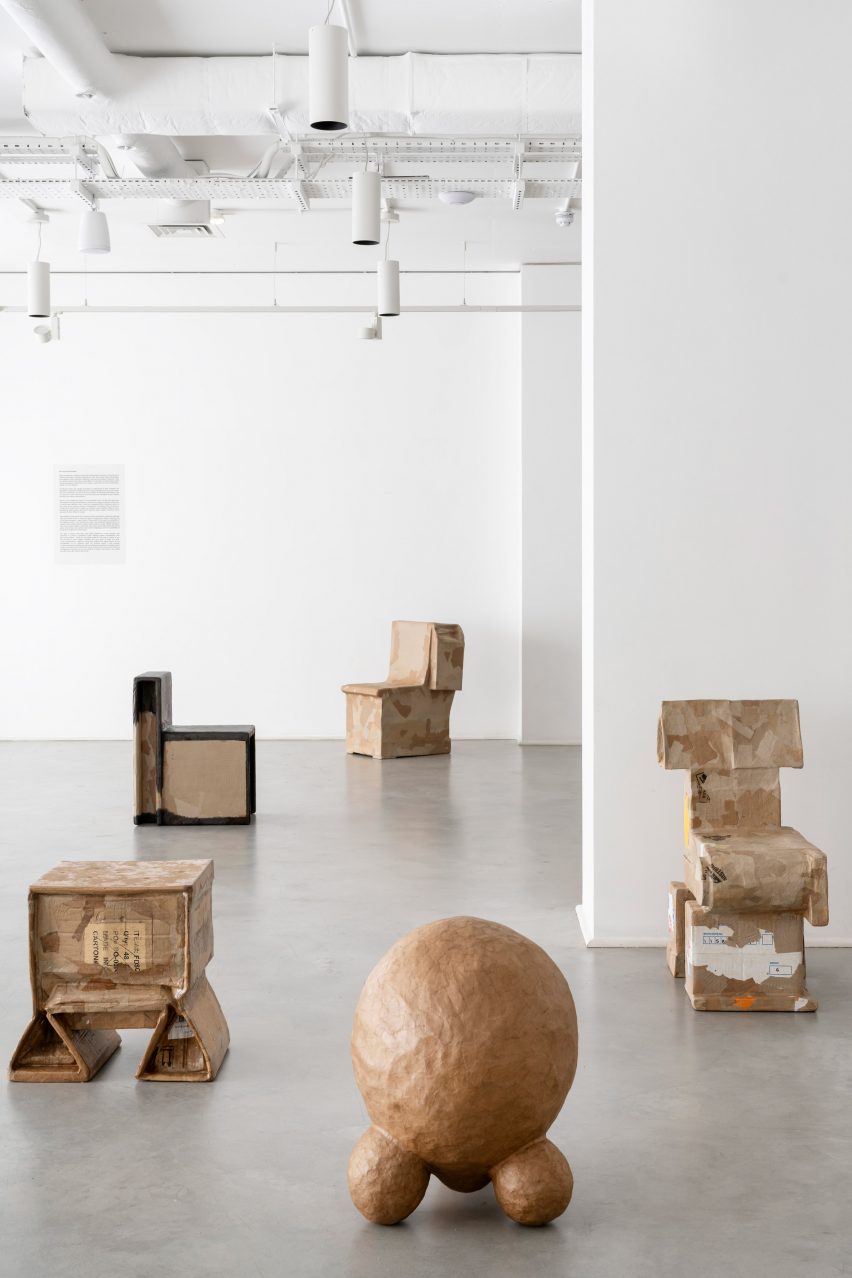
Occasional stripes of paint, made from mineral pigments and linseed oil instead of petroleum, provide the furniture's only decoration.
As a result, Lamb says the collection is entirely free of plastic, infinitely recyclable and easily fixable using tools that most people will already have at home.
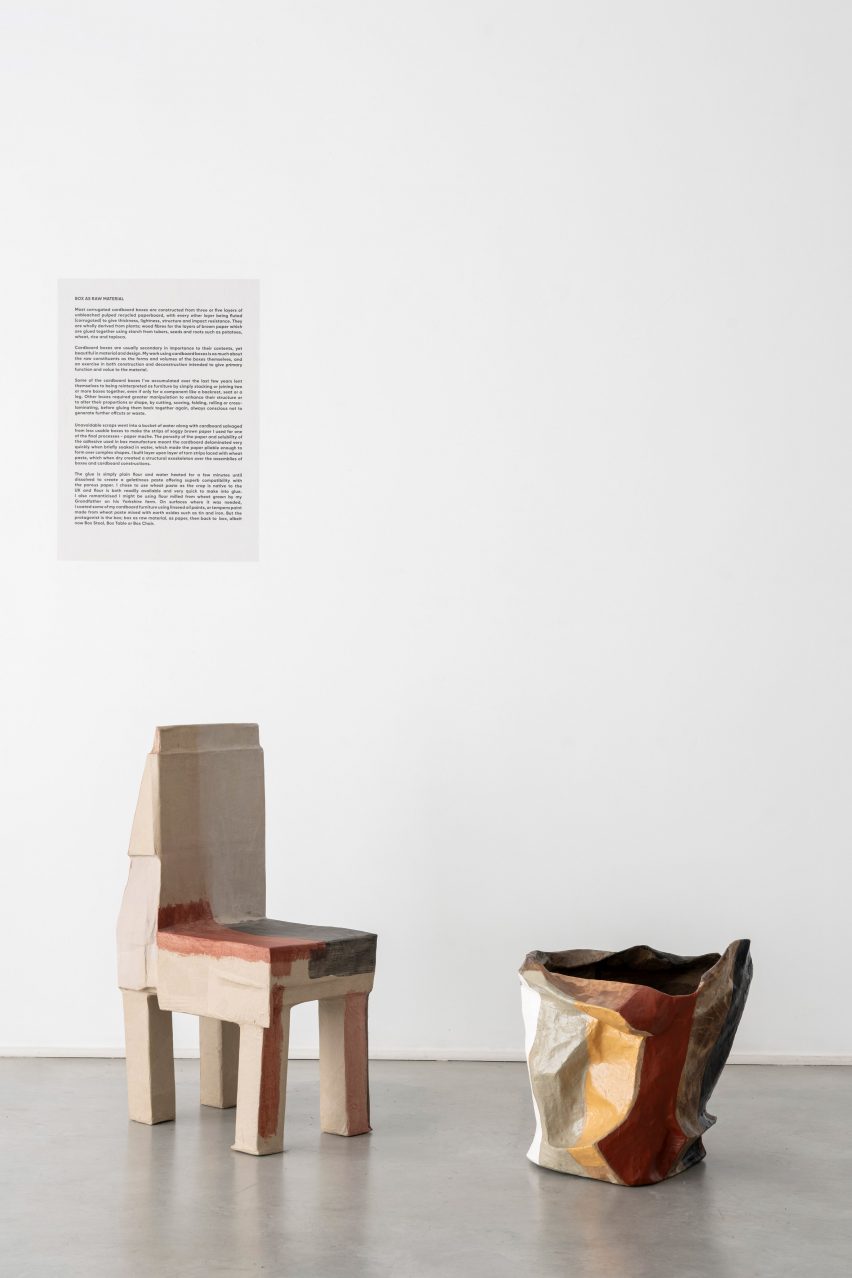
"I've chosen a very simple, readily available and humble set of materials to make this collection," he told Dezeen. "And all the pieces can be infinitely repaired."
"You just need some extra cardboard boxes and some flour out of your baking cupboard. Mix a bit of flour and water and you can paste on a little patch."
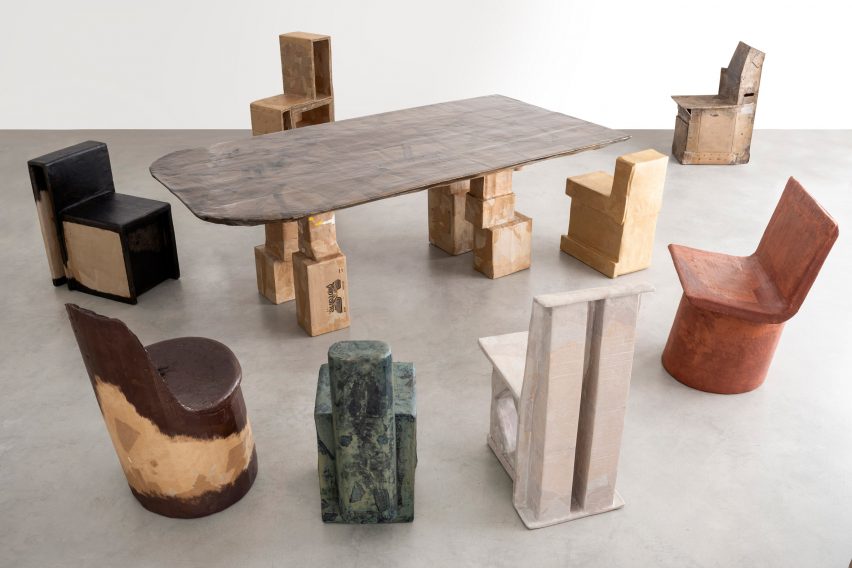
No new cardboard was purchased as part of the project. Instead, Lamb formed the collection entirely from waste that had accumulated in his studio over the last couple of years, ranging from postage boxes to toilet rolls and contact lens packaging.
The aim was to explore whether this ubiquitous material could be structural in its own right, without the need for plastic reinforcements.
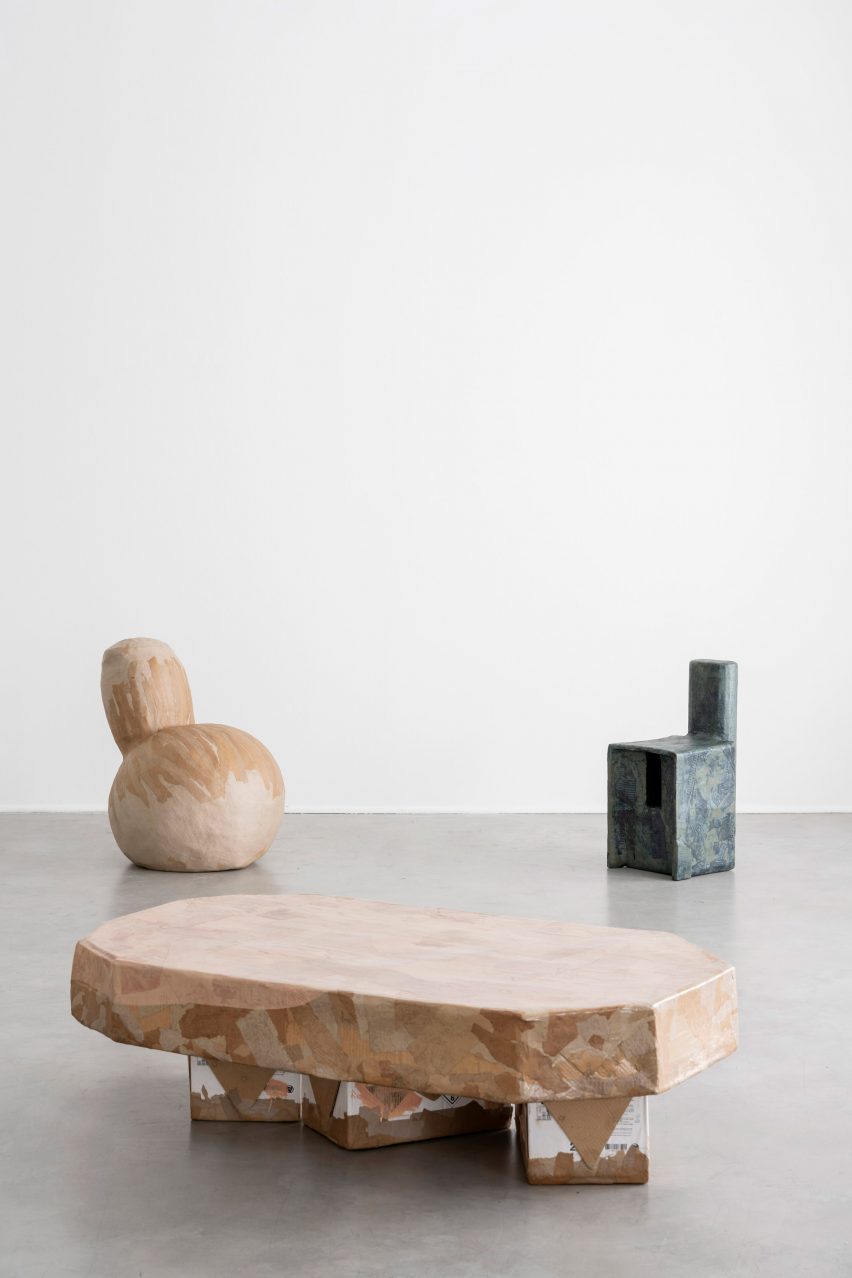
"It's taken me nearly 20 years of running my own practice to see it more as a primary material rather than always a secondary material," Lamb explained.
"I use cardboard in my practice on a daily basis, but more for transportation and logistics, and as a model-making material to prototype furniture," he added. "But previously, it was never the end result. It was just part of the journey."
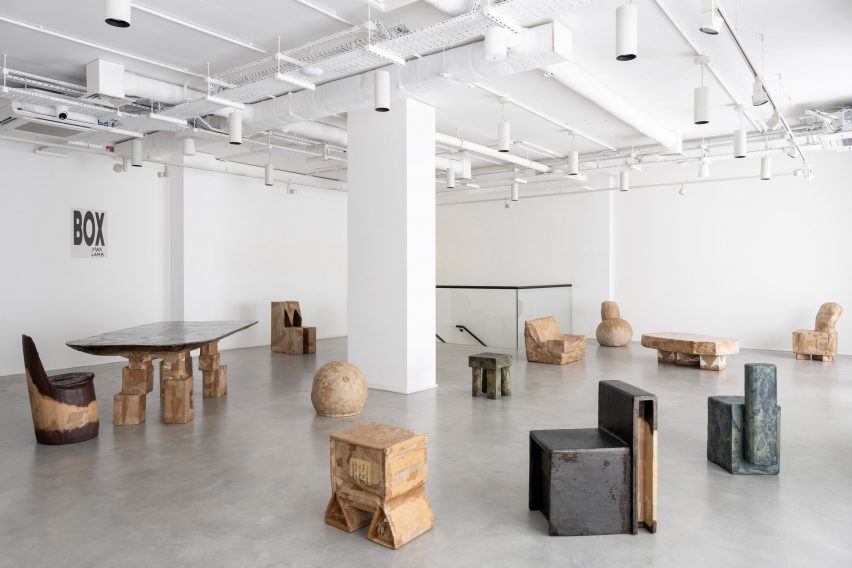
Where possible, Lamb left the boxes largely intact, simply stacking them into different configurations to take on the shape of a chair or a table, glued together using the wheat flour paste.
To ensure that these assemblages have the necessary structural integrity to perform as pieces of furniture, each box is internally reinforced with cardboard lattices that form a kind of skeleton.
Any offcuts from the process, Lamb turned into papier-mache and applied to the exterior of the furniture in up to 15 layers, creating a supportive exoskeleton.
"I've only obscured areas where it's been necessary for structural requirements, rather than purely for aesthetics," the designers explained.
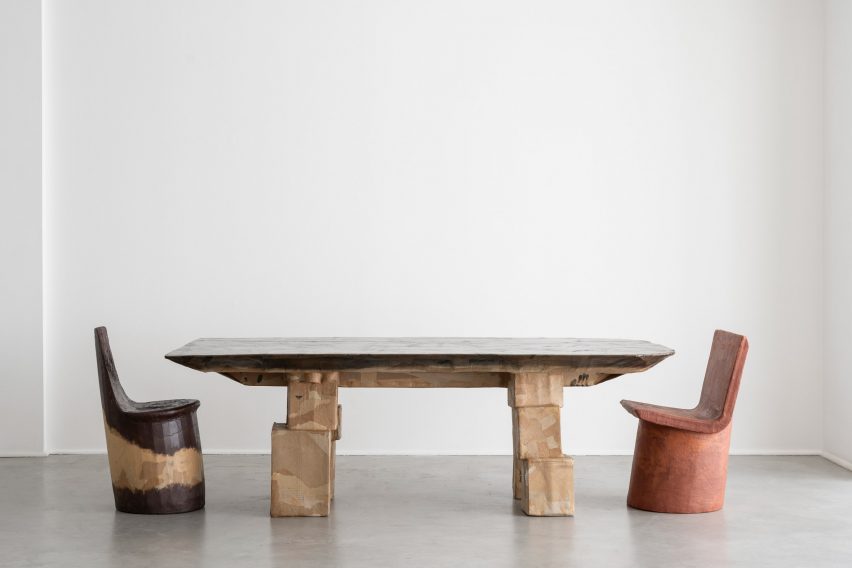
When boxes were too flimsy to stand up on their own, Lamb tore them apart into strips and used them as raw material.
In one case, this involved rolling them up together to form a huge log, which he turned into a chair by cutting a seat and backrest out of the cylinder.
Any offcuts were fed back into the process in the form of papier mache to stabilise the chair and cut down on waste.
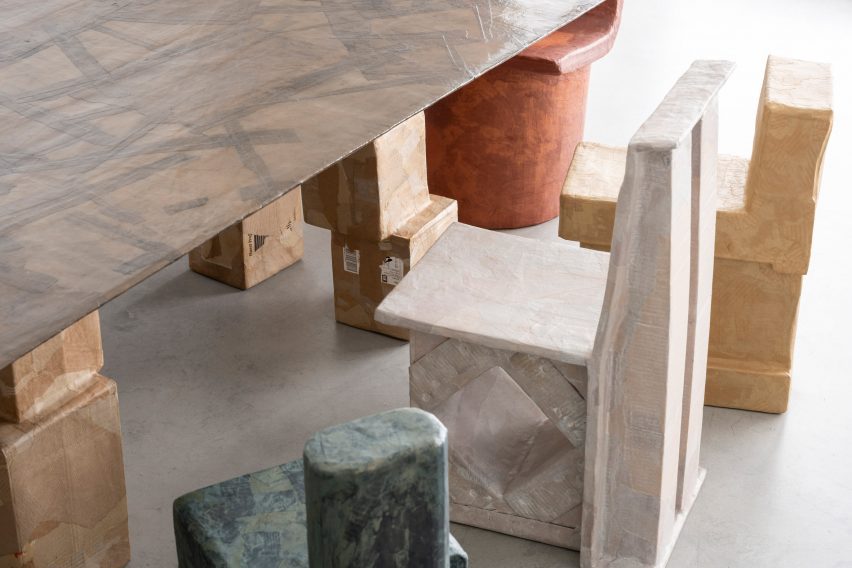
Combining cardboard made from wood pulp with wheatpaste glue and linseed paint means the collection is entirely plant-based and plastic-free, according to Lamb.
This forms a marked departure for the designer, who is known for his work with polystyrene – as seen in 60 chairs project and his contribution to the 2016 Venice Architecture Biennale.
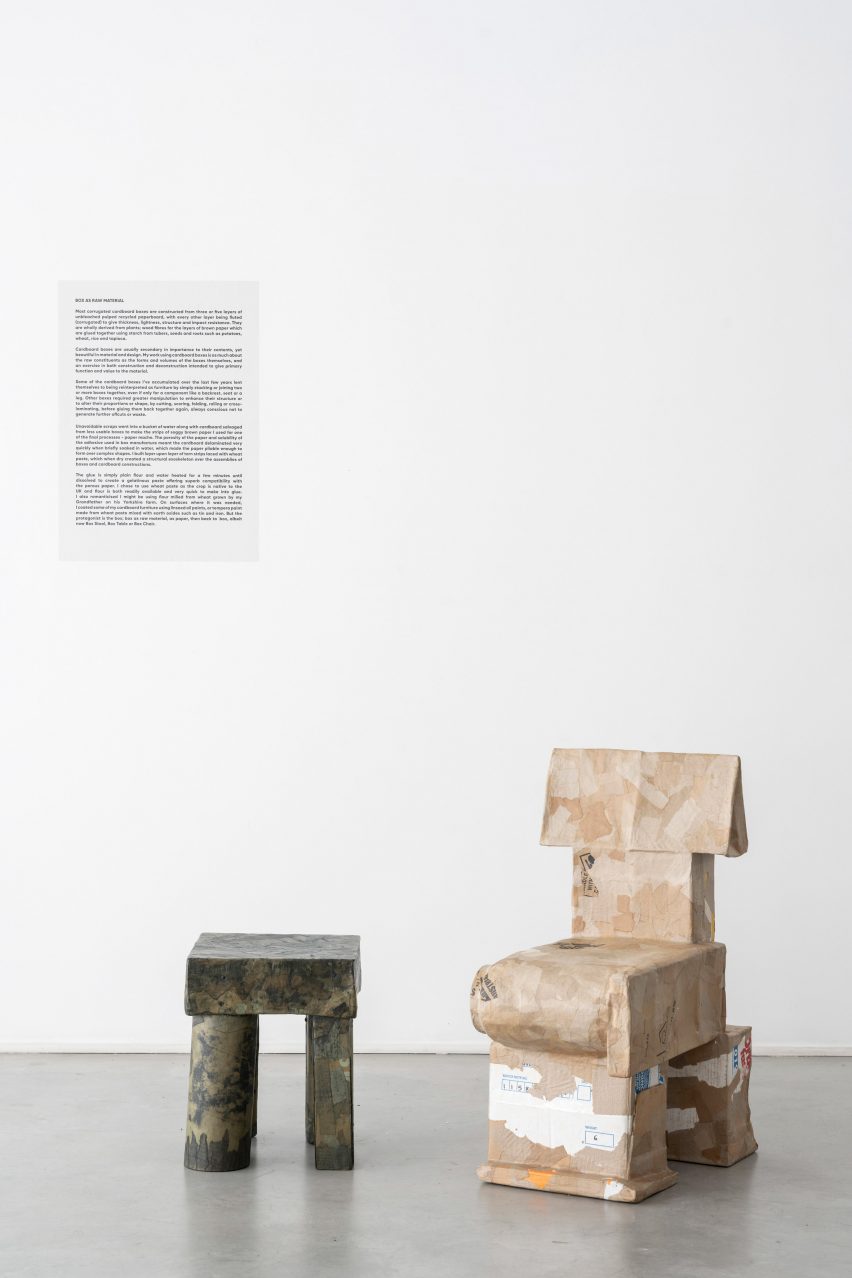
"Although I'm not saying I'm never going to use that material again, I've been looking for an alternative," Lamb said. "The hope is that it is the start of me weaning myself and hopefully my customers off synthetics."
"Me producing this new body of work speculatively will hopefully give people an option," he added.
"So you don't have to buy work made out of expanded polystyrene and polyurethane rubber from me. You can also buy furniture made out of cardboard if you want."
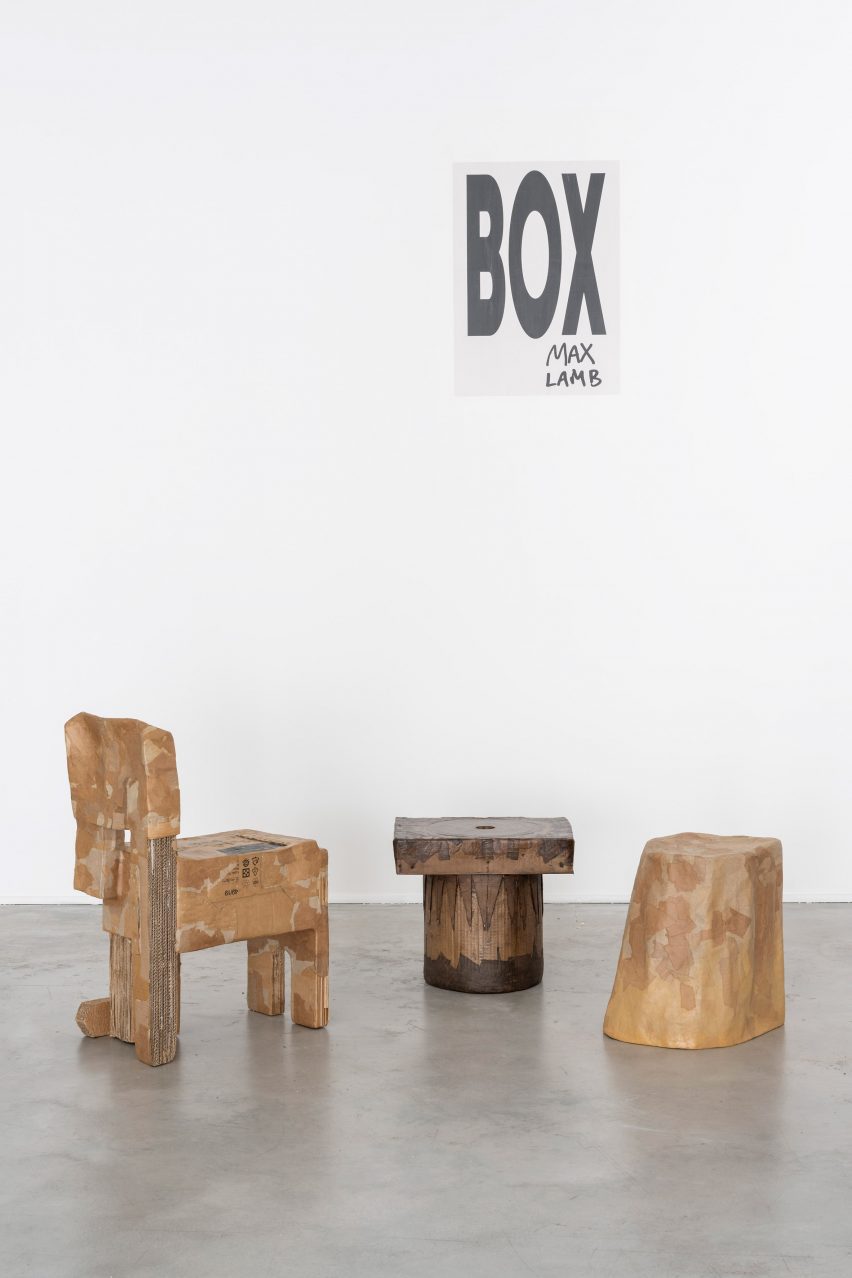
The project has turned Lamb into somewhat of a cardboard hoarder, as he continues to experiment with new ways of working with the material.
"I've started valuing every single little bit of cardboard that's been coming into my workshop," he said.
"Now, I've got half a garage that I'm renting, which is full of cardboard and that will all be material that goes into more work in the future."
The photography is by Thomas Joseph Wright.
Box is on show at Gallery Fumi from 5 October to 18 November 2023. For more exhibitions, events and talks in architecture and design, visit Dezeen Events Guide.